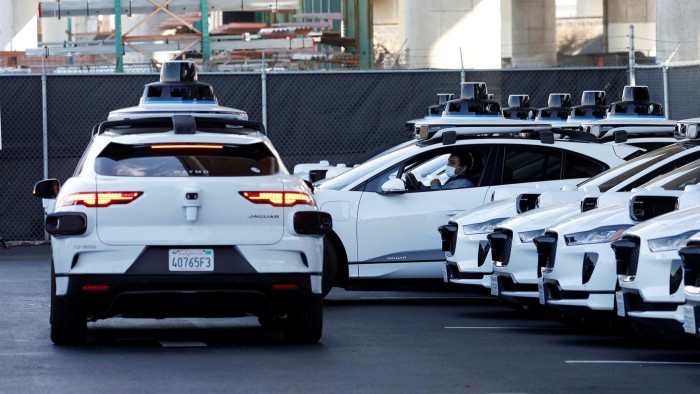Electric vehicles — the political cop-out

Roula Khalaf, Editor of the FT, selects her favourite stories in this weekly newsletter.
This article is part of the Financial Times free schools access programme. Details/registration here. Students were asked to write on how transport changes for either food or people might help the world to achieve the goals of the Paris Agreement.
Most people believe the future of transport is electric vehicles. Their uptake has been increasing rapidly and governments are starting to create policies to encourage their use. But they are a cop-out which avoids difficult decisions by governments.
From a political standpoint, EVs are very easy to implement. They require no change in culture, comparatively little investment from central government and use existing road infrastructure. Most importantly, their adoption makes governments seem environmentally friendly.
With 27 per cent of UK greenhouse gas emissions originating from transport, there is a clear needs to decarbonise. While aeroplane and shipping technology have not developed to the standard required, decarbonisation of cars can be achieved now.
But the problem is that EVs are not nearly as climate friendly as people believe. Some studies criticise the high level of emissions required to produce EV batteries and the electricity they use unless it is sustainably sourced.
Promoting car use creates other negative externalities such as increased congestion, which is estimated to have cost the UK economy £6.9bn in 2019. It reduces levels of physical activity and creates associated health problems, increases noise pollution and makes cities unpleasant to live in.
Decarbonisation will inevitably involve EVs, but walking, cycling and improved public transport should take centre stage. Keeping within the rules of the Paris climate agreement will require a change in culture, which is much harder to achieve than simply rolling out electric car subsidies.
It will require governments to restrict freedom, which is not easy in a democracy. The recent experience of Transport for London’s Low Traffic Neighbourhood schemes (LTNs) is good example of the difficulties ahead. These schemes consist of traffic management schemes that close off roads to through traffic while allowing pedestrians and cyclists to pass.
They have been implemented to reduce “rat running” on local residential roads and push any remaining traffic on to main roads better adapted to cope safely with larger volumes of traffic. The result has been protests from people claiming there would be an increase in emergency service response times. Others have resorted to vandalism, with local groups damaging traffic counting equipment and even arson.
In many cases, the fear of not being able to drive everywhere evoked concerns about entrapment and exclusion from society. Other criticisms raised after the Sarah Everard case included perceived reduced public safety on blocked roads.
Yet one study found that the number of reported crimes in and around LTNs has shown changes “similar to or more favourable than the wider background trend”. Waltham Forest, a borough with one of the most extensive schemes, identified dangerous levels of pollution fell and researchers from King’s College London estimate life expectancy may have increased by up to six weeks compared to 2013 as a result.
A report by the London Fire Brigade found response times did not increase. Even fears of the main roads becoming permanently gridlocked have not materialised, with experts citing the “evaporating traffic theory” as drivers switched to walking or cycling. Levels of cycling in Waltham Forest have increased sharply.
Despite such positive findings, the borough was the scene of protests in 2015 when the schemes were announced. Unlike many councils which gave in to the loudest voices and watered-down their programmes, the council held its nerve. Now reportedly only 1.7 per cent of people want the road changes to be reversed.
Despite this plethora of evidence, newly installed LTNs are still often controversial, with one report joking that they are “more divisive than Brexit”. Perhaps people are simply reluctant to change. The truth is that if we are going to solve the climate crisis we cannot please everyone.
Using EVs as central to tackling climate change is a cop-out from governments wanting to avoid having to contend with difficult and sometimes unpopular decisions such as imposing LTNs and congestion charging.
Climate Capital

Where climate change meets business, markets and politics. Explore the FT’s coverage here.
Are you curious about the FT’s environmental sustainability commitments? Find out more about our science-based targets here
Governments should focus their attention on discouraging car travel and promoting walking and cycling. In a country where people are currently used to driving practically everywhere, discouragement is by no means easy,
Recent data show that 27 per cent of UK greenhouse gas emissions come from transport, of which 61 per cent are from cars and taxis. With one-third of UK car journeys lasting less than five miles, discouraging car travel would go a long way to reducing the UK’s carbon footprint — and far more quickly than EVs.
As we emerge from the coronavirus pandemic, scientists warn that we are entering another one: obesity. Active lifestyles including more active travel are key to the response. So why not kill tackle the climate crisis and obesity at once?
Walking and cycling is the transport of the future — but only if we are willing to stand up to resistance from people used to the freedom of driving where and when they please.
Cameron Allen, Royal Grammar School, Guildford
Comments